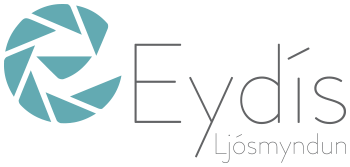Difference essentially brands is actually somewhat accounted for by the research build (QM = 5
75, p = .02) and sample type (QM = , p < .001). Specifically, significant negative associations between social anxiety and social cognition were found among studies using between groups (r = ?.26, p < .001), rather than correlational (r = ?.07, p = .06), designs and when clinical and nonclinical groups were compared (r = ?.31, p < .001; of which 40% of effect sizes were from studies in which ASD was the clinical group, and 60% from those with SoAD as the clinical group), but not when samples included clinical only (r = ?.02, p = .86) or community only samples (r = ?.05, p = .13).
The type of measure used to measure social anxiety did not account for a significant amount of variance among effect sizes (QM = 2.46, p = .48). However, the type of measure used to assess social cognition (QM = 9.72, p = .02), as well as the informant of both the social cognition (QM = , p < .01) and social anxiety measures, did (QM = , p = .02). Specifically, a significant negative association between social anxiety and social cognition was found within studies that used a clinical assessment as a measure of social cognition (r = ?.28, p < .001; clinician reported, r = ?.34, p < .001) and within those that used self- or parent-reported social anxiety measures (r = ?.18, p < .01; r = ?.16, p = .01). Overall significant effects were not found among studies that used experimental tasks (r = ?.06, p = .09) or those using self-report, r = ?.05, p = .08; or parent-report, r = ?.20, p = .11 to assess social cognition. Neither were significant effects found for those using clinician or teacher report to assess social anxiety (r = ?.09, p = .29; r = ?.13, p = .12). The type of face used in emotion recognition tasks did not significantly moderate the relationship between social anxiety and social cognition (QM = 1.99, p = .37), but the valence of the face did (QM = , p = .01). However, within each valence, no significant association was found between social anxiety and social cognition for any of the facial expression valences (see Table 2).
Group provides
Variation in effect sizes was significantly accounted for by the age group of the sample (QM = , p = .02), but not by sex (QM = 0.21, p = .65). Specifically, a significant negative association was found between social anxiety and social cognition among studies that included pre-adolescent (r = ?.21, p < .001) and combined pre-adolescent and adolescent samples (r = ?.25, p < .001). However, a significant positive association was found based on effect sizes from the one study that included an adolescent only sample (r = .10, p < .01). Overall significant effects were not found for studies including only young children (r = .03, p = .63), those including younger and older children (r = ?.09, p = .23), or those including participants from across the full child and adolescent age range (i.e. 0–18 years old; r = ?.33, p = .06).
Danger of bias
Visual https://datingranking.net/local-hookup/toronto/ examination of your harness plot into the Shape step 3 suggests you can easily asymmetry, however, rating relationship evaluating ideal that funnel patch wasn’t significantly asymmetrical (z = ?0.eleven, p = .91). Also, slender and fill sensitivity analyses advised one to no knowledge have been needed to generally meet proportion triggered no switch to the general feeling dimensions guess. This indicates that publication bias wasn’t planning to enjoys rather influenced the general meta-studies abilities.
